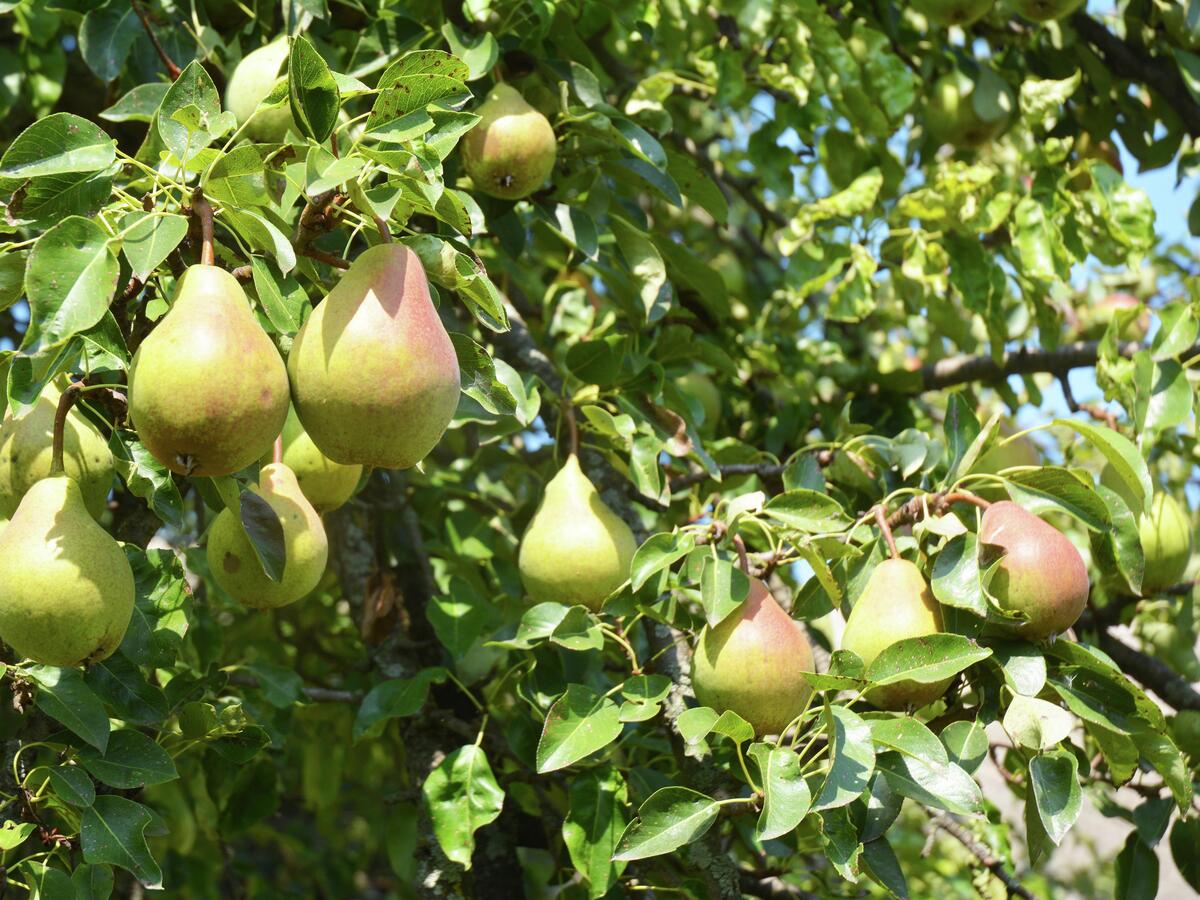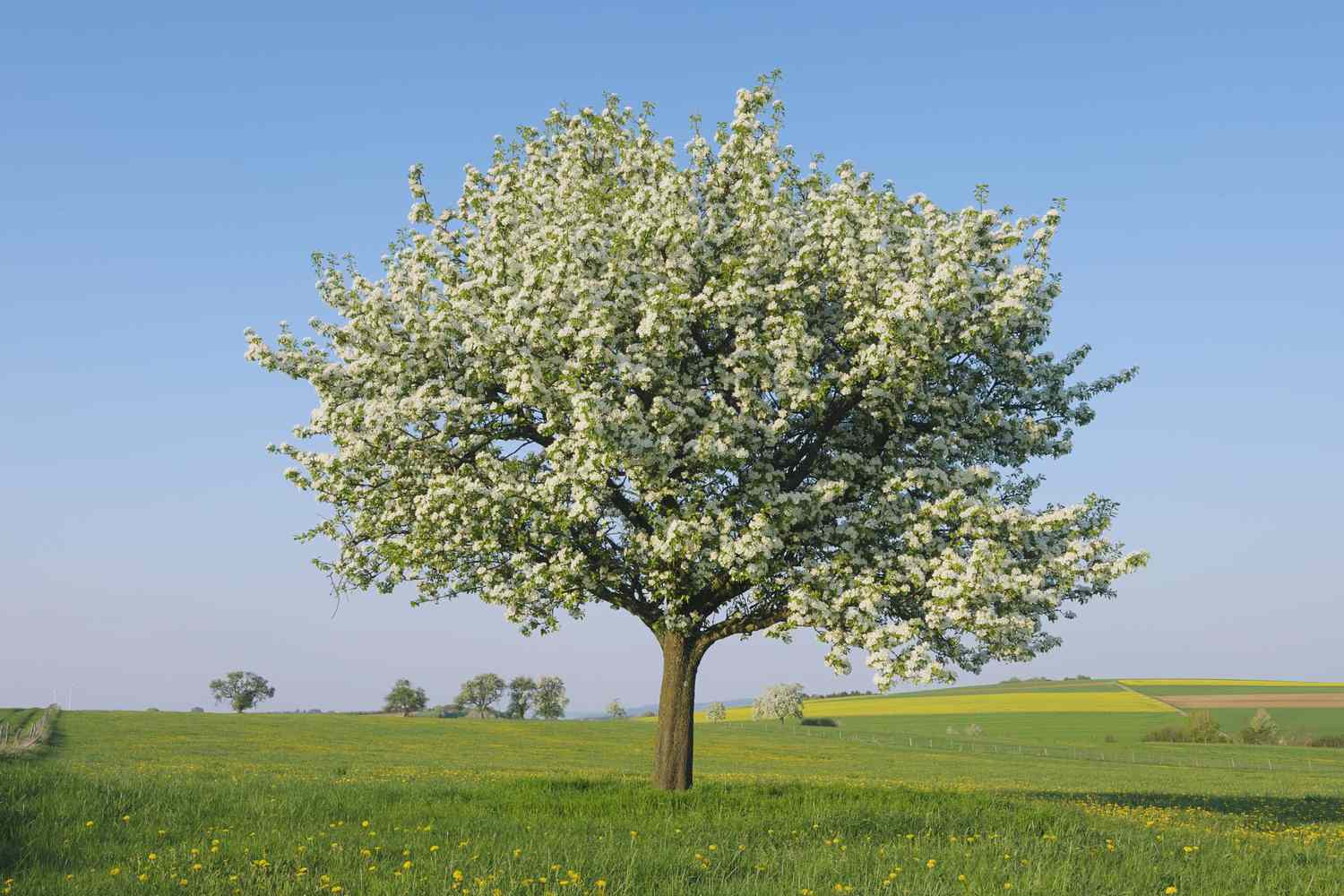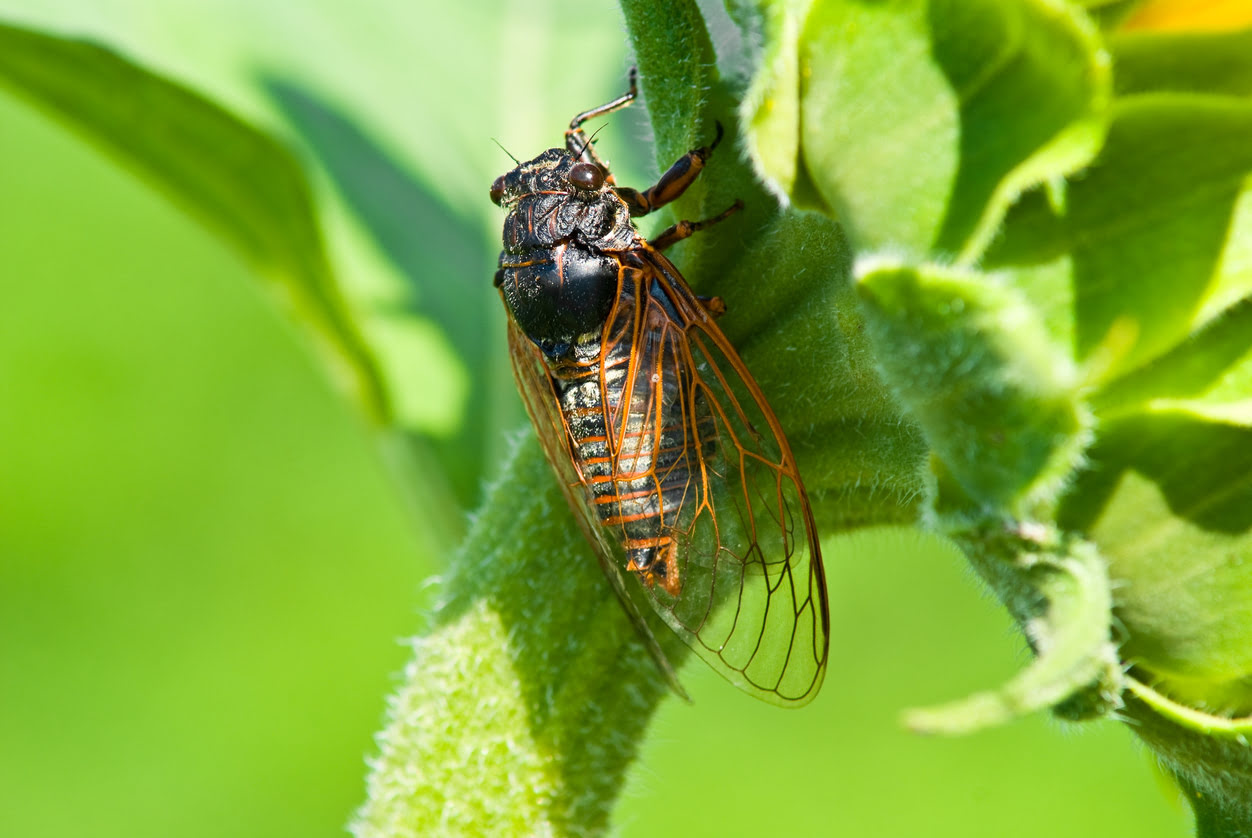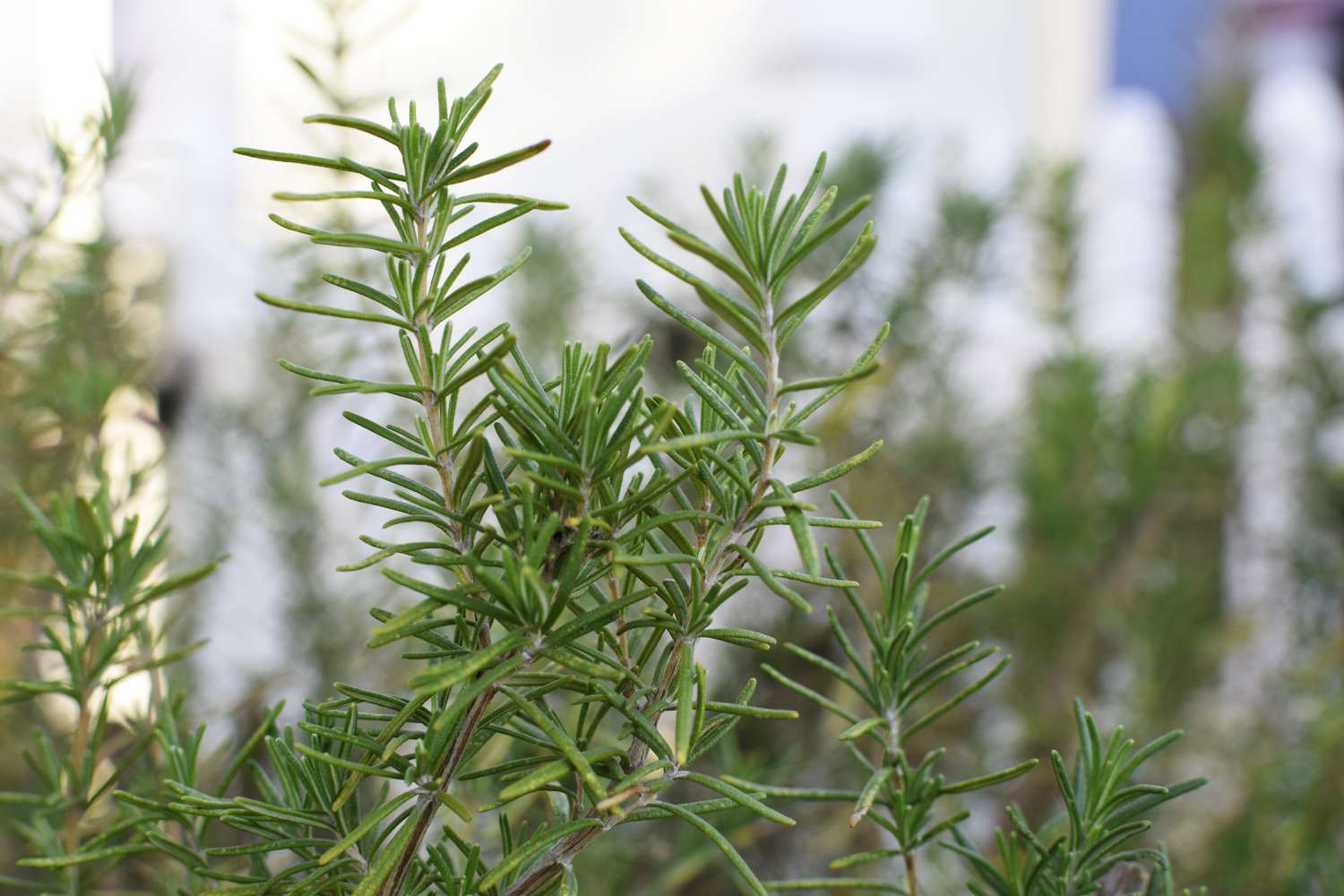Home>Gardening Techniques>Plant Care>How Long Do Bradford Pear Trees Live


Plant Care
How Long Do Bradford Pear Trees Live
Modified: February 10, 2024
Learn how to care for Bradford pear trees and maximize their lifespan. Discover tips and techniques for planting, maintenance, and promoting longevity.
(Many of the links in this article redirect to a specific reviewed product. Your purchase of these products through affiliate links helps to generate commission for Chicagolandgardening.com, at no extra cost. Learn more)
Table of Contents
- Introduction
- Factors Affecting the Lifespan of Bradford Pear Trees
- Ideal Growing Conditions for Bradford Pear Trees
- Common Diseases and Pests Affecting Bradford Pear Trees
- Pruning and Maintenance Tips for Bradford Pear Trees
- Signs of Decline and Aging in Bradford Pear Trees
- Lifespan Expectancy of Bradford Pear Trees
- Conclusion
Introduction
Bradford Pear trees, scientifically known as Pyrus calleryana, are popular ornamental trees known for their beautiful white blossoms in the spring and vibrant foliage in the fall. They are commonly found in residential landscapes, parks, and along streets. However, many homeowners and garden enthusiasts wonder about the lifespan of these trees and how long they can expect them to thrive in their gardens.
While the lifespan of a Bradford Pear tree can vary depending on various factors, including environmental conditions, maintenance practices, and the presence of diseases or pests, understanding these factors can help ensure the longevity of these trees in your garden.
Throughout this article, we will explore the factors that affect the lifespan of Bradford Pear trees, the ideal growing conditions for them, common diseases and pests that can pose a threat, pruning and maintenance tips, as well as the signs of decline and aging that you should be aware of. Let’s dive deeper into the world of Bradford Pear trees.
Factors Affecting the Lifespan of Bradford Pear Trees
The lifespan of a Bradford Pear tree can be influenced by several factors that impact its overall health and vigor. By understanding these factors, you can take the necessary steps to ensure the longevity of your trees:
- Genetic Predisposition: Bradford Pear trees are known for their weak branch structure, which can make them susceptible to breakage, especially during heavy winds or storms. This genetic predisposition can shorten their lifespan if not properly managed.
- Environmental Conditions: The climate and growing conditions in your area will play a significant role in the lifespan of Bradford Pear trees. They prefer full sun or partial shade and well-drained soil. Extreme heat, drought, or excessive moisture can put stress on the trees, making them more susceptible to disease and reducing their overall lifespan.
- Soil Quality: Good soil quality is essential for the health and longevity of any tree, including Bradford Pears. Poor soil lacking in nutrients can lead to stunted growth and increased vulnerability to diseases and pests. Regular soil testing and appropriate amendments can help ensure optimal soil conditions.
- Pruning and Maintenance: Regular pruning is crucial for maintaining the structural integrity of Bradford Pear trees. Removing dead or weak branches, thinning the canopy, and shaping the tree not only promotes healthy growth but also reduces the risk of branch failures and extends the lifespan of the tree.
- Disease and Pest Management: Bradford Pears are susceptible to various diseases and pests, such as fire blight, pear rust, and aphids. These can cause significant damage to the tree if left untreated. Regular inspections, appropriate preventive measures, and timely intervention can help mitigate the impact of diseases and pests and prolong the lifespan of your trees.
By considering and addressing these factors, you can significantly improve the lifespan of your Bradford Pear trees and enjoy their beauty for years to come. It is important to note that while some of these factors may be beyond your control, proactive management and regular care can make a significant difference in the health and longevity of your trees.
Ideal Growing Conditions for Bradford Pear Trees
To ensure the longevity and overall health of Bradford Pear trees, it is important to provide them with the ideal growing conditions. By meeting their specific requirements, you can help these trees thrive in your garden. Here are the key elements to consider:
- Light: Bradford Pear trees thrive in full sun to partial shade. They require at least six hours of direct sunlight daily to promote healthy growth and abundant flowering. Planting them in a location where they can receive adequate sunlight will contribute to their longevity.
- Soil: Well-drained soil is crucial for the health of Bradford Pear trees. They prefer slightly acidic to neutral soil with a pH range of 6.0 to 7.5. The soil should also have good fertility and moisture-retention capabilities. Conduct soil tests to understand its composition and make necessary amendments to optimize its quality.
- Water: While Bradford Pear trees are drought-tolerant once established, regular irrigation is essential during their initial establishment period. Young trees require consistent moisture to develop a strong root system. Once established, they can withstand mild drought conditions, but it is still important to provide supplemental water during prolonged dry spells.
- Spacing: Proper spacing is important when planting Bradford Pear trees. These trees can reach a mature height of 30 to 50 feet and have a spread of 20 to 30 feet. Providing adequate spacing between trees and other structures will promote proper air circulation and prevent overcrowding, reducing the risk of disease and improving their overall health.
- Climate: Bradford Pear trees are typically hardy in USDA hardiness zones 5 to 9. However, they can withstand a range of climatic conditions. It is important to choose a cultivar that is well-suited for your specific climate, as extreme temperatures, heavy winds, and frost can impact their health and longevity.
By ensuring that your Bradford Pear trees receive the ideal growing conditions, you are setting the stage for their long-term success. Remember to regularly monitor their water needs, provide appropriate fertilization, and maintain proper pruning and maintenance practices. With the right care, these beautiful trees can grace your landscape for many years.
Common Diseases and Pests Affecting Bradford Pear Trees
While Bradford Pear trees are generally resilient, they can be susceptible to certain diseases and pests that can impact their lifespan and overall health. Being aware of these common issues and taking preventive measures can help protect your trees. Here are some of the most prevalent diseases and pests that affect Bradford Pear trees:
- Fire Blight: Fire blight is a bacterial disease that causes wilting, blackening, and “burning” of branches, flowers, and fruit. It can spread rapidly, especially during warm and moist conditions. Pruning infected branches and applying appropriate bactericides can help manage the disease.
- Pear Rust: Pear rust is a fungal disease that manifests as orange or yellow spots on leaves, stems, and fruit. It thrives in humid conditions and can defoliate the tree if not treated. Fungicidal sprays or resistant cultivars are effective in controlling pear rust.
- Aphids: Aphids are small, sap-sucking insects that can infest Bradford Pear trees, causing leaf curling, distortion, and honeydew secretion. They reproduce quickly and can attract other pests. Insecticidal soap or horticultural oils can help eliminate aphids and minimize their damage.
- Scale Insects: Scale insects are small, immobile pests that feed on the sap of trees, causing stunted growth, yellowing leaves, and honeydew secretion. They can be challenging to control, but systemic insecticides or horticultural oils can be effective against scale infestations.
- Canker Diseases: Canker diseases, such as Botryosphaeria canker, can affect the bark of Bradford Pear trees, causing sunken lesions and dieback. Pruning infected branches and maintaining tree vigor through proper care can help prevent and manage canker diseases.
Regular monitoring of your Bradford Pear trees is crucial to detect any signs of diseases or pest infestations. Timely intervention, such as pruning affected branches, applying appropriate treatments, and ensuring proper tree care, can help mitigate the impact of these issues and prolong the lifespan of your trees.
Pruning and Maintenance Tips for Bradford Pear Trees
Proper pruning and maintenance practices are essential for the health, structure, and longevity of Bradford Pear trees. By following these tips, you can ensure that your trees remain vibrant and healthy:
- Prune During Dormancy: The best time to prune Bradford Pear trees is during their dormant period in late winter or early spring. This allows the tree to heal quickly and reduces the risk of disease transmission. Avoid pruning during active growth periods to minimize stress on the tree.
- Remove Dead and Diseased Branches: Regularly inspect your trees and remove any dead, damaged, or diseased branches. These can become entry points for pests and diseases, compromising the overall health of the tree. Use sharp and sterilized pruning tools to make clean cuts.
- Thin Out the Canopy: Thinning out the canopy helps improve airflow and sunlight penetration, reducing the risk of fungal diseases and promoting even growth. Remove excess branches, especially those that are crossing or rubbing against each other.
- Avoid Topping: Topping, the practice of indiscriminate cutting of tree branches, should be avoided with Bradford Pear trees. It can weaken the tree, promote weak growth, and increase the risk of branch failure. Instead, focus on selective pruning to maintain the tree’s natural shape and structure.
- Maintain Tree Vigor: Ensuring proper tree care is crucial for the overall health of Bradford Pear trees. Provide regular water during dry periods, apply balanced fertilizer in spring, and mulch around the base of the tree to retain soil moisture and suppress weed growth.
- Monitor for Pests and Diseases: Regularly inspect your trees for any signs of pests or diseases. Early detection allows for prompt treatment and minimizes the potential damage to the tree. If you notice any issues, consult with a professional arborist for appropriate measures.
By implementing these pruning and maintenance tips, you can promote the health, structure, and longevity of your Bradford Pear trees. Remember to always practice safe pruning techniques and prioritize the well-being of your trees to enjoy their beauty for years to come.
Signs of Decline and Aging in Bradford Pear Trees
As Bradford Pear trees age, they may begin to show signs of decline. It is important to recognize these signs early on to assess the health of the tree and take appropriate measures to prolong its lifespan. Here are some common signs of decline and aging to look out for:
- Reduced Growth: One of the first signs of declining health in Bradford Pear trees is reduced growth. If you notice that your tree is growing slower than usual or producing fewer leaves and flowers, it could indicate underlying issues.
- Yellowing or Browning Leaves: Discolored leaves, particularly yellowing or browning, can be a sign of stress or nutrient deficiencies in the tree. It may be an indication of poor soil quality, waterlogged roots, or nutrient imbalances.
- Canopy Thinning: As a tree ages, the canopy may start to thin out, with a noticeable decrease in foliage density. This can be a natural part of the aging process, but it can also indicate poor tree health or the presence of diseases or pests.
- Branch Dieback: Dead or dying branches within the tree’s canopy is another sign of decline. This can be caused by disease, pest infestations, or structural issues. It is important to prune and remove these branches to prevent further damage and potential hazards.
- Wilted or Drooping Leaves: If the leaves of your Bradford Pear tree are constantly wilted, drooping, or showing signs of dehydration, it may indicate a lack of adequate water uptake or root problems.
- Bark Damage: Inspect the bark of your tree for any signs of damage, such as cracks, wounds, or peeling. Damaged bark can make the tree more susceptible to diseases and pests and can impact its overall health.
- Declining Flower and Fruit Production: As a Bradford Pear tree ages, it may produce fewer flowers and fruits. This is a natural part of the aging process, but if it is accompanied by other signs of decline, it could indicate underlying health issues.
If you notice any of these signs in your Bradford Pear tree, it is important to consult with a professional arborist. They can assess the tree’s health, identify any underlying issues, and recommend appropriate treatments or management strategies to prolong its lifespan.
Lifespan Expectancy of Bradford Pear Trees
The lifespan of Bradford Pear trees can vary depending on several factors, including genetics, growing conditions, care and maintenance practices, and the presence of diseases or pests. While there is no definitive lifespan for these trees, understanding these factors can give us a general idea of what to expect.
On average, Bradford Pear trees can live for around 20 to 25 years. However, with proper care and attention, some trees have been known to survive for 30 years or more. It is important to note that the weak branch structure of Bradford Pear trees can make them more susceptible to branch failure as they age, which can impact their overall lifespan.
Genetics play a significant role in the longevity of Bradford Pear trees. The original Bradford Pear cultivar, developed in the 1960s, was known for its weak branch structure and propensity for branch splitting. As a result, newer cultivars, such as the Cleveland Select or Chanticleer, have been developed to address these issues and potentially increase the lifespan of the trees.
The lifespan of Bradford Pear trees can also be influenced by the growing conditions provided. When planted in their preferred environment, exposed to adequate sunlight, planted in well-drained soil, and given proper care, these trees are more likely to thrive and have a longer lifespan.
The presence of diseases and pests can significantly impact the lifespan of Bradford Pear trees. Fire blight, pear rust, and other common diseases can weaken the tree and make it more prone to decline. Likewise, pests such as aphids and scale insects can cause stress and contribute to overall tree health deterioration.
Regular pruning and maintenance, including removing dead or diseased branches and providing proper care, can help extend the lifespan of Bradford Pear trees. Additionally, proactive disease and pest management, proper watering, and soil fertility management can further contribute to their longevity.
It is important to monitor the signs of decline and aging in Bradford Pear trees and take appropriate actions to maintain their health. Regular inspections, consultation with arborists, and timely interventions can help optimize the lifespan of these trees and ensure their continued beauty in your landscape.
Conclusion
Bradford Pear trees are beautiful ornamental trees that can add charm and elegance to any landscape. While their lifespan can vary depending on various factors, including genetics, growing conditions, and proper care, understanding these factors is crucial for ensuring their longevity.
Factors such as genetic predisposition, environmental conditions, soil quality, pruning and maintenance practices, and the presence of diseases or pests can all impact the lifespan of Bradford Pear trees. By providing the ideal growing conditions, such as adequate sunlight, well-drained soil, and regular care, you can enhance their health and prolong their lifespan.
It is important to be aware of common diseases and pests affecting Bradford Pear trees and take proactive measures to prevent and manage them. Regular inspections, timely intervention, and appropriate treatments can help mitigate the impact of these issues on the tree’s health and extend its lifespan.
Pruning and maintenance are essential for the structural integrity and health of Bradford Pear trees. Removing dead or diseased branches, thinning the canopy, and maintaining proper tree care practices not only promote healthy growth but also reduce the risk of branch failure and increase the overall lifespan of the tree.
As Bradford Pear trees age, signs of decline and aging may become evident. Recognizing these signs, such as reduced growth, canopy thinning, and branch dieback, allows for early intervention and appropriate management to prolong the tree’s lifespan.
While the average lifespan of Bradford Pear trees is around 20 to 25 years, with proper care, some trees can survive for 30 years or more. Providing optimal growing conditions, monitoring for diseases and pests, and implementing appropriate maintenance practices can significantly contribute to the longevity of these trees.
In conclusion, by understanding the factors that affect the lifespan of Bradford Pear trees and implementing the recommended care and management strategies, you can enjoy their beauty for many years. Regular monitoring, timely interventions, and a proactive approach to tree care will ensure that these magnificent trees thrive in your garden for generations to come.










